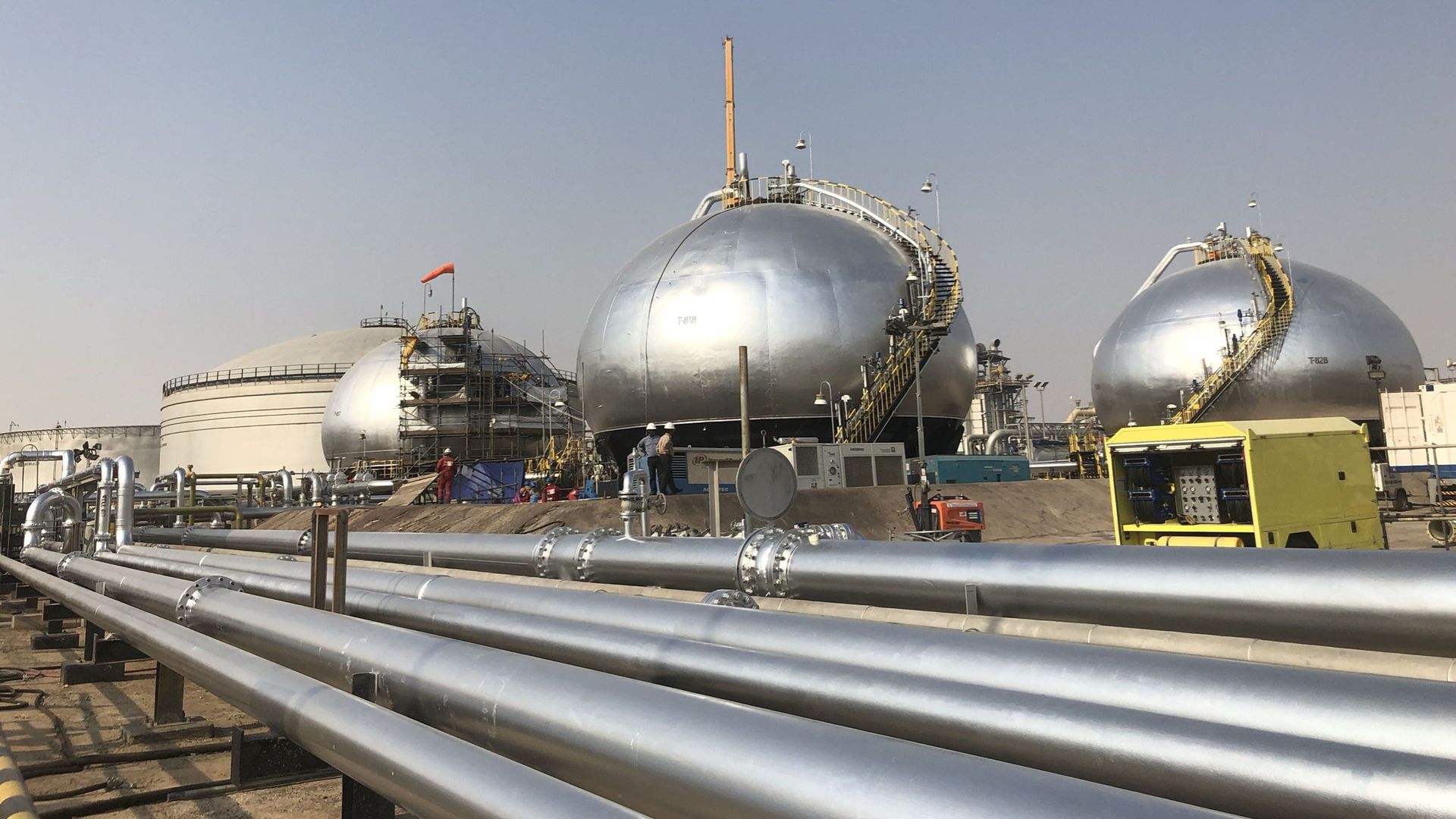尊敬的用戶您好,這是來自FT中文網的溫馨提示:如您對更多FT中文網的內容感興趣,請在蘋果應用商店或谷歌應用市場搜尋「FT中文網」,下載FT中文網的官方應用。


Opec+ has gone through some dry times. But now it has struck oil. Saudi Arabia and Russia’s production cuts have succeeded in lifting oil prices by 27 per cent to $95 per barrel since the end of June. With oil now within sight of last year’s $100/bbl average, consensus estimates for the energy sector look out of date.
歐佩克+ (Opec+) 經歷了一些乾旱時期。但現在它打出了石油這張牌。自6月底以來,沙烏地和俄羅斯的減產成功使油價上漲27%,至每桶95美元。隨著油價接近去年每桶100美元的水準,對能源行業的普遍預測似乎已經過時。
This run marks a return of form for the cartel. Not so long ago, member producers quailed at tighter output quotas, fearing a rapid supply response from US shale producers. The new financial discipline demanded by exploration and production investors — profits before growth — has given Opec a stronger hand.
這種情況標誌着卡特爾的迴歸。就在不久前,成員國還對收緊產量配額感到不安,擔心美國頁岩油生產商會迅速對供應做出反應。勘探和生產投資者要求的新財務準則——利潤優先於成長——讓歐佩克有了更強的控制力。
A surprisingly resilient global economy has helped. Despite fears about economic weakness in China, its crude imports rose to 11.5mn barrels a day in August, according to Jorge León at Rystad Energy. That is 2mb/d higher than this time last year. That sort of leap leaves China accounting for the lion’s share of this year’s forecast world demand growth. The International Energy Agency puts it at 2.2mb/d.
出人意料的全球經濟韌性也起到了幫助作用。Rystad Energy的豪爾赫•萊昂(Jorge León)表示,儘管人們擔心中國經濟疲軟,但8月份中國的原油進口量仍增至每天1150萬桶。這比去年同期每天高出200萬桶。這種飛躍使中國在今年預計的全球需求成長中佔據了最大份額。國際能源機構(IEA)估計爲每天220萬桶。
The world now produces less oil than it consumes. Cue rapid destocking. Inventories around the world plummeted in August and should continue to fall over the coming months.
目前,全球石油產量低於消耗量。庫存迅速減少。8月份全球庫存大幅下降,未來幾個月應該會繼續下降。
The tightness in the market supply may well continue into next year. The exponential penetration of electric vehicles should lop off half a million barrels of oil from demand. Yet overall economic growth should lead to a small increase in consumption compared with this year’s 101.8mb/d.
市場供應緊張很可能會持續到明年。電動汽車的迅速普及將使石油需求減少50萬桶。然而,與今年的每天1.018億桶相比,整體經濟成長應該會導致石油消費量小幅增加。
Meanwhile, oil production has to run just to stand still. Output from big, conventional oilfields declines at a rate of about 3 to 5 per cent annually, no matter what. Few new projects are expected to come on stream in 2024. The wild card here is Iran, where production has risen sharply despite sanctions.
與此同時,石油生產必須保持穩定。無論如何,大型常規油田的產量每年都會以3%至5%的速度下降。預計2024年投產的新項目寥寥無幾。伊朗的情況比較特殊,儘管受到制裁,該國的石油產量仍大幅上升。
The “Saudi lollipop” — a sweetener for the oil market — has wrongfooted analysts. Analysts expect earnings at European energy producers to fall 23 per cent fall in 2023 and a further 6 per cent next year, according to Bernstein Research. These should start to rise — and with it the stock prices of the European majors, such as Shell and Eni.
「沙烏地棒棒糖」——石油市場的甜頭——讓分析師們措手不及。伯恩斯坦研究公司(Bernstein Research)的數據顯示,分析師預計,歐洲能源生產商的利潤在2023年將下降23%,2024年再下降6%。這些數字應該會開始上漲,殼牌(Shell)和埃尼(Eni)等歐洲石油巨擘的股價也會隨之上漲。
The sector’s lowly forward multiple of 7.4 times, despite record cash flow yields, could test the resolve of investors to avoid these carbon-heavy giants.
儘管現金流收益率達到創紀錄水準,但該行業的預期市盈率僅爲7.4倍,這可能會考驗投資者避開這些重碳巨擘的決心。